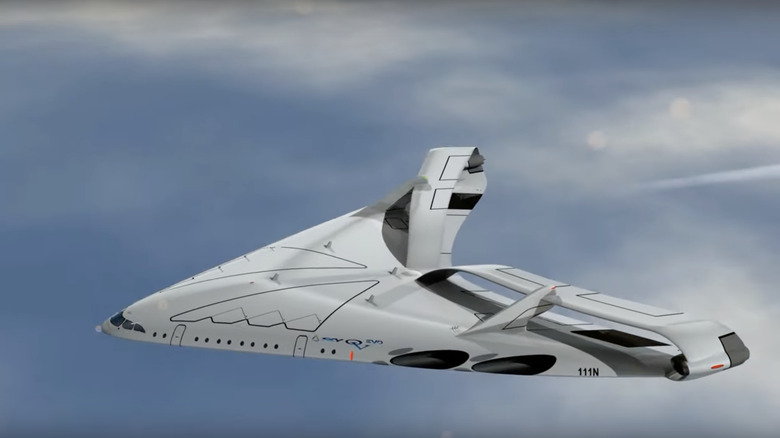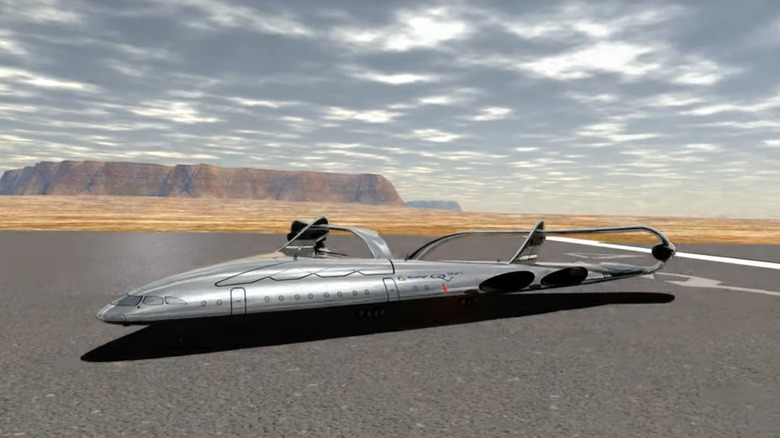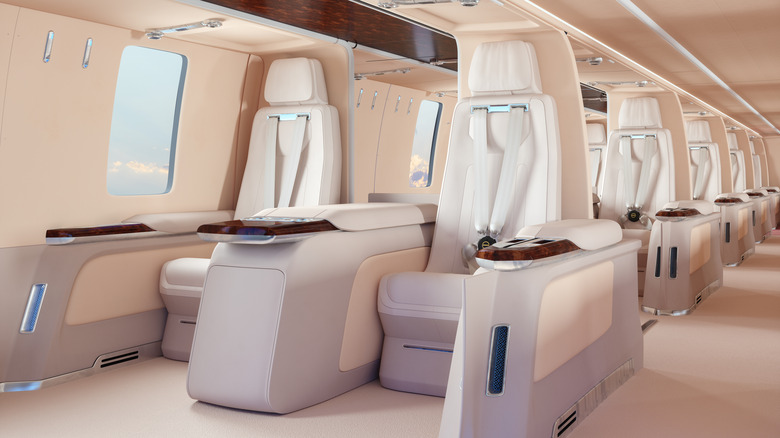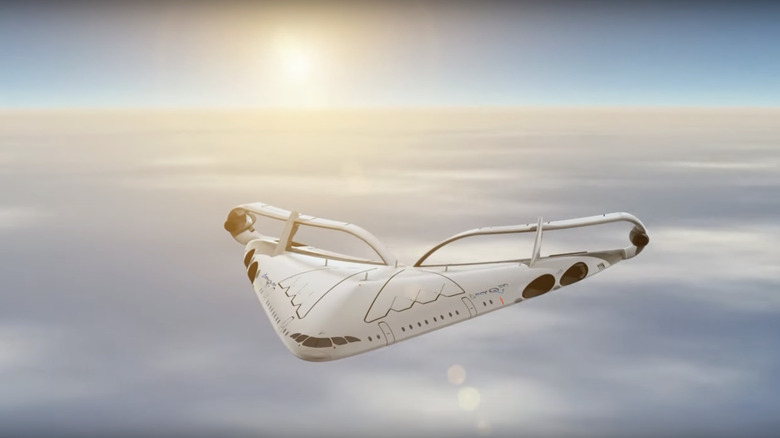This Wingless Concept Jet Could Traverse Over The Atlantic At 1,120 MPH
The average non-stop flight from New York City to London on a passenger airline takes roughly seven hours, depending on the plane. Designers of a new aircraft, the Sky OV Evo, are taking the wingless concept from one of America's best stealth bombers and hoping to cut that flight time down by two hours. Not only that, the designers of this plane also intend for it to be a quiet and luxurious experience.
Óscar Viñals, the aircraft's designer, intends for it to fly faster than the speed of sound at 1,118 mph, or Mach 1.5. This isn't the first passenger plane that would achieve supersonic speeds, though. Some argue the Concorde jet was ahead of its time when it hit a max speed of 1,354 mph and flew across the pond in about three hours.
Viñals admitted that the Concorde was a significant influence for this project. He intends for the Sky OV to be more than just a fast airplane with a unique appearance, though. The Sky OV Evo also utilizes technology that will cut down on emissions and improve performance. Its AI-controlled ailerons, a movable airfoil used to control lateral balance, make it a significant leap forward in aerospace design, especially for a passenger plane. Still, it would be years before this plane hits the tarmac — if it ever does.
How would the Sky OV Evo achieve supersonic speeds?
There are a few points of design that would help the Sky OV break the sound barrier, one of which is its wingless design. Lacking long wings protruding from the fuselage reduces the amount of drag the plane will generate. For the uninitiated, NASA defines drag as "the aerodynamic force that opposes an aircraft's motion through the air." It's essentially aerodynamic friction. Less friction allows an aircraft to reach higher speeds.
However, this concept is designed with a lot of different technology to travel faster than the speed of sound, and reducing drag is just the tip of the iceberg. There are also large recesses on each side of the plane housing a Fluid Propulsion Air Multiplier (FPAM) system, which is a bladeless fan concept that was used on the Airbus A320E. This takes the air surrounding the craft and turns it into a source of thrust, which feeds into the Sky OV's Hybrid PDE (pulse detonation engine) and turbofans. The plane is designed to use a fuel-efficient turbofan engine for takeoff before switching over to the detonation engine, which uses controlled explosions to create thrust.
The inside of this concept jet looks stunning, too
What sets the Sky OV apart from the B-2 Spirit and other "Flying Wing" variants is the increased volume at its center. This gives it more than enough space to carry up to 300 passengers, who would be able to enjoy their favorite television shows from the comfort of an in-flight bedroom. Not only that, there would also be a dining room and a kitchen where an in-flight chef could prepare fresh food.
Óscar Viñals went into more detail about the living area of the concept, telling Luxury Launches, "In the living room, you'll find a leather double-seat sofa complete with dining tables, a 32-inch flat-screen TV, [and] noise-cancelling headsets." Unlike the Concorde, which had a single aisle down the middle with two seats flanking each side of it, the Sky OV concept would be more spacious and accommodating than what travelers have come to expect from a first-class experience.
There is also talk of passengers receiving bathrobes to go along with showers in the plane, but there's no mention of how many showers would be available. It could be one for every private cabin or perhaps shared showers spread across the aircraft.
The Sky OV is designed to be eco-friendly
To achieve its goal to run on zero emissions, the Sky OV is designed to combine hydrogen and electric power. To help with its electric energy, the plane will harness the power of the sun in the form of quantum solar dots scattered across its roof. Equipping planes with solar panels is kind of brilliant as they typically fly above the clouds where they're exposed to plenty of sun.
It wouldn't be hard for the Sky OV to get above most cloud coverage, as its service ceiling is 59,055 feet (11 miles) and the highest clouds typically get in temperate climates is 45,000 feet. Tropical climates, on the other hand, might be a little trickier since clouds can get as high as 60,000 feet there. It's unknown if there's a plan to install batteries for storing solar energy on the Sky OV, but it might be necessary to take full advantage of its solar panels.
All that being said, it is important to remember that this is merely a concept. It hasn't been built yet, nor had any major airline brand purchased the design at the time of this writing. However, a supersonic passenger airline isn't unheard of. The Concorde transported travelers across the Atlantic Ocean from 1976 to 2003. However, if the Sky OV does become a reality, it will need to undergo rigorous scrutiny to prevent it from suffering the same fate as the Concorde jet in 2000.



